Visit BG Crafts Gallery and discover artworks by contemporary Bulgarian artists!
Bulgarian iconography - icons and their painting in Bulgaria
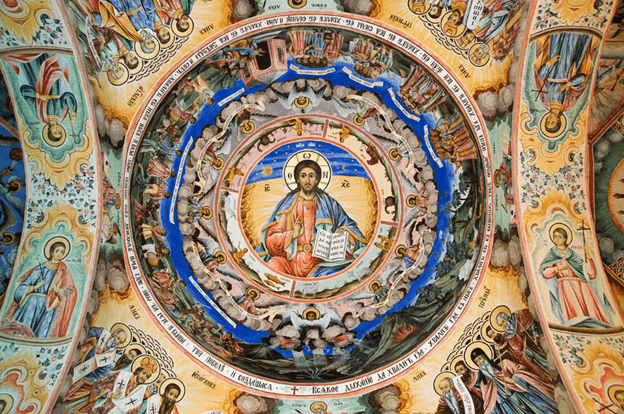
An icon is a picture depicting Christ, the Holy Trinity, saints or any other religious subject, usually painted on a wooden board or other material. Icons are especially revered and valued in the Eastern Orthodox Church, where they play an important role in religious worship. Apart from churches, icons are used in chapels, and in private homes.
The Bulgarian icon has over 1000 years of history.
After the adoption of Christianity from the Byzantine Church, Bulgaria began to play an important role in the development and spread of this medieval art (actually, Bulgaria was the first Slavic country to spread iconography).
The Bulgarian capitals - Pliska, and above all Preslav, are the first places where, after 865, massive church building began. In the 9th and 10th centuries, Bulgarian craftsmen were actively building churches all over the country. All of them are richly decorated with icons, and frescoes.
The oldest Bulgarian icons discovered so far, are the Preslav ceramic icons. The second Bulgarian capital (Preslav) was the most significant center of the arts during the period. Many famous masters of fine art worked precisely in Preslav, developing various iconographic techniques. All of their works are examples of Bulgarian medieval art.

During the Second Bulgarian Kingdom, a large number of icon paintings were created. At that time, Veliko Tarnovo was the capital and developed as an economic, political and cultural center. The new capital of Bulgaria is the place where Bulgarian iconographers created some of their most significant works - the double icon of Christ Pantocrator, the Virgin of Eleusis, and the double icon from the Poganovo Monastery are only a small part of them.

The samples from the 12th and 14th centuries are distinguished by high artistic and aesthetic value, and are proof of the contribution of Bulgarian icon painting to the treasury of world classical art.
The Ottoman invasion was one of the reasons for the delay in the development of Bulgarian culture and art. However, the iconographic tradition continued to be followed in a semi-official manner.
Among the highest-quality works of the 15th and 16th century are Christ Pantokrator from the Kremikovtsi Monastery, Abram entertains the Angels by master Nedyalko from Lovech. Those works prove that the Bulgarian national spirit, and the centuries-long traditions, have not died during the foreign dominance. the best quality works from the 15-16th century are Christ Pantokrator from the Kremikovsky Monastery and Avram visiting the angels by master Nedyalko from Lovech. These works prove that the Bulgarian national spirit and centuries-old traditions did not die during foreign domination.

Every Bulgarian church keeps the icon of the saint whose name it bears.
At the end of the 16th and the beginning of the 17th century, there was a rise in centers of icon painting in the Tarnovo, Nessebar, Lovech, Bachkovo, Plovdiv, as well as in other places. Thanks to the political and social upheavals in the country, a new revival of this art took place. The Tarnovo region is particularly rich in wall paintings, and icons. A large part of them are preserved on the walls and iconostasis of the historic medieval churches in Veliko Tarnovo, and the village of Arbanasi.

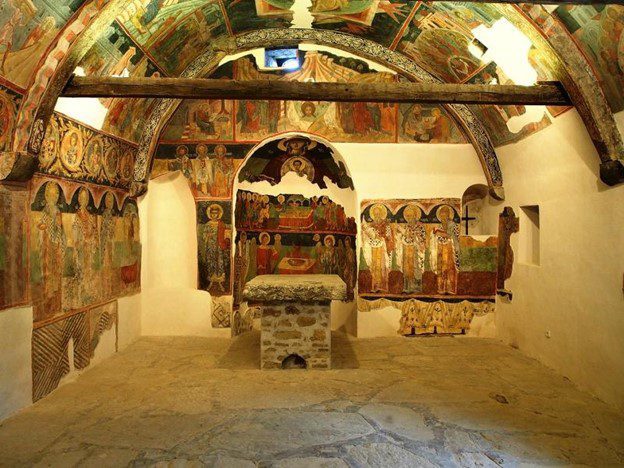


The end of the 18th century saw the beginning of a marked influence from folk art, and Western Baroque. Artists began to sign their works with new self-confidence, and pride. All of them belonged to different schools – this was the time of great families of icon painters. As a result of external influences, and the spiritual upsurge of the time, painters break free from the canon – their saints begin to have the faces of real people.
Developed over the centuries, iconography in Bulgaria received a great boost during the period of The National Revival, which ended with the announcement of the independence of Bulgaria from the Ottoman Empire (1762-1878). New schools started to create valuable works in the cities of Tryavna, Bansko, Veliki Preslav, and Samokov.
Among the best icon painters of the Renaissance are: Zahari Zograf, Stanislav Dospevski and others.
In 1984, a small and almost unused chapel in city of Tryavna, located in central Bulgaria, was transformed into something unusual for the times of socialism: the first, and only one in Bulgaria Orthodox icon museum.
Today, the museum is home to a collection of over 160 icons, representing the work of generations of iconographers.
Over 1,200 works by Tryavna masters are stored in the warehouses of the Preobrazhensky, and Kapinovsky monastery.
Bulgarian icons they are often recognized by their bright colors. Often, the accents are blue, light green, pink and red, leaning towards orange.
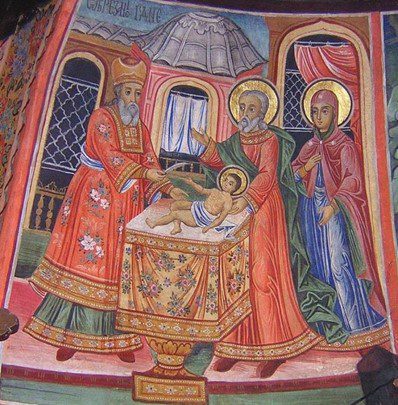
One of the biggest, and most remarkable iconographic schools is the Samokov school, founded by Hristo Dimitrov from Samokov, who was trained in Sveta Gora. At the end of the 18th century, Sveta Gora was the center, which collected European influences, refracted them through its own prism, and transmited them to other Christian Orthodox centers in the Balkans. After completing his studies, Hristo Dimitrov returned home to continue his work. He educated his sons – Dimitar Hristov Zograf (icon painter) and Zachary Zograf, a name well recognized by the Bulgarian public.
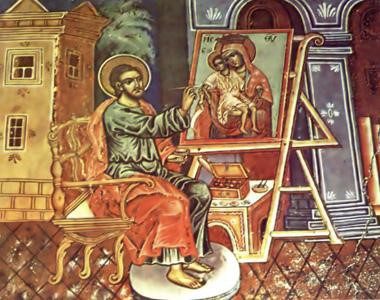
Dimitar Zograf introduced many new elements to church painting – images taken directly or indirectly from Western Europe. Very popular themes during the Renaissance began to enter church art.
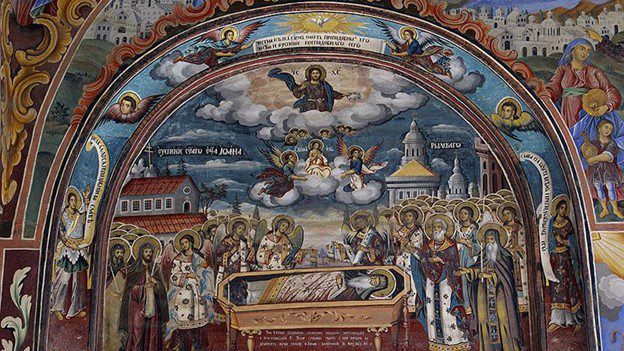
The most popular among them are the morally instructive motives, depicted in the open galleries of the great churches and associated with Last Judgment, Revelation of St. John, sins and others. The two brothers painted thousands of square meters of murals in the Rila Monastery. The main icon painter of the monastery is Dimitar Zograf.
The creativity of the artists from the Samokov School is not limited to the borders of Samokov. They worked in all corners of the then Bulgarian lands, in the western outskirts, and in today's land of Macedonia.
Follow us for more information: BG Crafts Gallery
